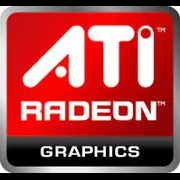ATI Radeon HD 5830

ATI Radeon HD 5830 in 2025: Nostalgia or Practicality?
We explore who might benefit from the legendary graphics card 15 years after its release.
Architecture and Key Features: TeraScale 2 and the Legacy of 2010
The ATI Radeon HD 5830, released in 2010, became part of the Radeon HD 5000 series, based on the TeraScale 2 architecture. This second generation of GPUs from AMD was manufactured using a 40nm process, which was considered cutting-edge at the time.
Key Features:
- DirectX 11: One of the first cards to support this version of the API, enabling tessellation and improved detail in games.
- Eyefinity: Technology for connecting up to three monitors simultaneously—a revolution for multitasking and gamers.
- Lack of modern features: No ray tracing (RTX), DLSS, or FidelityFX—these technologies emerged much later.
The TeraScale 2 architecture focused on increasing the number of stream processors (1120 for the HD 5830) and optimizing energy efficiency, but by today's standards, it is hopelessly outdated.
Memory: GDDR5 and Bandwidth
The HD 5830 was equipped with 1 GB of GDDR5 memory with a 256-bit bus, providing a bandwidth of 128 GB/s (effective memory frequency—4 GHz).
Impact on Performance:
- For games from 2010 (e.g., Crysis, Battlefield: Bad Company 2), this was sufficient for comfortable gameplay at High settings at 1080p.
- In 2025, 1 GB of memory is critically inadequate even for indie projects. Modern AAA games require at least 4–6 GB of VRAM.
Gaming Performance: What Can the HD 5830 Do in 2025?
The card was designed for 1920x1080 resolution, but today its capabilities are modest:
- Older Titles: The Witcher 2, Skyrim (2011)—30–45 FPS at medium settings.
- Modern Games: CS2, Fortnite—20–30 FPS at low settings in 720p.
- 4K and 1440p: Not considered—lack of memory and low computational power.
Ray Tracing: Not supported—hardware RT cores are required, and the HD 5830 lacks them.
Professional Tasks: Capabilities Beyond Gaming
For basic tasks, the card can still be useful, but with caveats:
- Video Editing: Simple projects at resolutions up to 1080p (for example, in DaVinci Resolve), but rendering will be slow.
- 3D Modeling: Only simple scenes in Blender—the lack of support for modern APIs (OpenCL 1.1) limits functionality.
- Scientific Calculations: Outdated drivers and low performance make it unsuitable for serious tasks.
Power Consumption and Heat Output: A Demanding “Veteran”
- TDP: 175 W—this is a high figure for 2025.
- Cooling: The reference cooler is noisy even under minimal load. A case with good ventilation (2–3 fans for intake/exhaust) is recommended.
- Power Supply: Minimum 500 W with 6+8 pin connectors.
Comparison with Competitors: How Does the HD 5830 Stack Up Against Its Peers?
In 2010, the main competitor was the NVIDIA GeForce GTX 460 (1 GB):
- GTX 460: Better energy efficiency (150 W TDP) and support for PhysX.
- HD 5830: Higher performance in DirectX 11 games but generates more noise.
By 2025, both cards are relics. For comparison, even a budget NVIDIA GTX 1650 (2024) is 3–4 times faster.
Practical Tips: How to Use the HD 5830 in 2025
1. Power Supply: Don’t skimp—500–550 W with 80+ Bronze certification is recommended.
2. Compatibility: PCIe 2.0 x16 works in modern motherboards, but check for driver availability for your OS (Windows 10/11 are partially supported).
3. Drivers: The last version is Catalyst 15.7.1 (2015). Conflicts may arise with new games and software.
4. Use Cases:
- Retro gaming (games from 2005–2012).
- Backup card for testing a PC.
- Multi-monitor setup for office tasks.
Pros and Cons: Is It Worth Getting?
Pros:
- Extremely low price on the second-hand market ($15–30).
- Support for Eyefinity for multi-monitor configurations.
- Nostalgic value for enthusiasts.
Cons:
- High power consumption.
- Noisy cooling system.
- Does not support modern APIs and technologies (Vulkan 1.2, DirectX 12 Ultimate).
Final Conclusion: Who Should Consider the HD 5830?
This graphics card is suitable for:
1. Retro game enthusiasts who want to immerse themselves in the 2000s atmosphere without emulators.
2. Owners of old PCs looking for a temporary replacement for a burnt-out card.
3. IT enthusiasts experimenting with building budget multi-monitor systems.
Do not consider the HD 5830 if you need a card for modern gaming, 4K video editing, or machine learning. By 2025, even budget models like the AMD Radeon RX 6400 or Intel Arc A380 offer significantly more capabilities at a similar price ($100–150 for new devices).
The HD 5830 is a piece of history that serves as a reminder of how far the industry has come in 15 years. It is still functional, but its time has passed.
Basic
Memory Specifications
Theoretical Performance
Miscellaneous
Benchmarks
Compared to Other GPU
Share in social media
Or Link To Us
<a href="https://cputronic.com/gpu/ati-radeon-hd-5830" target="_blank">ATI Radeon HD 5830</a>